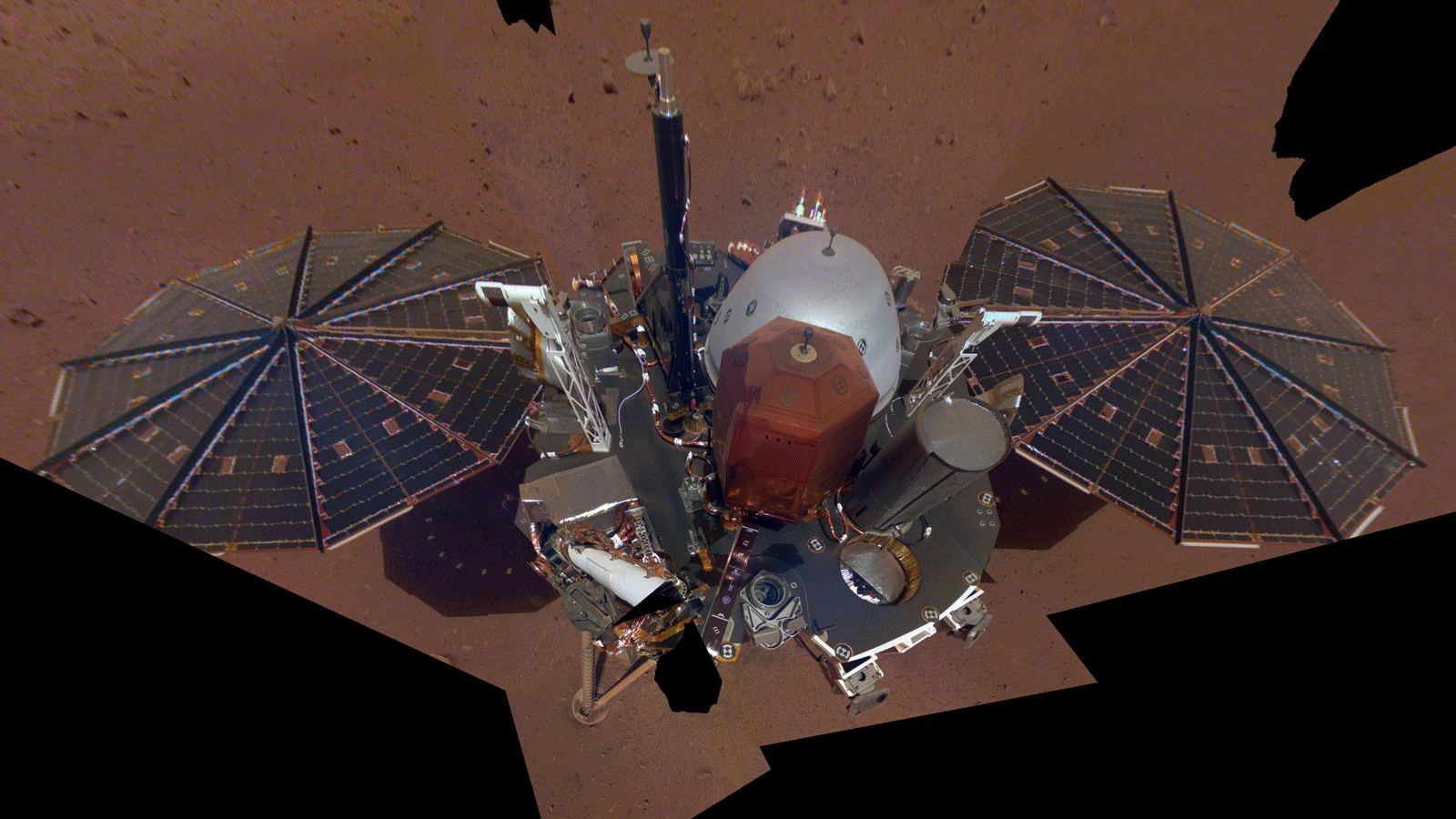Some lucky astronomers get to work with some of the rarest material in the world. Real Martian meteorites are extraordinarily rare, but are invaluable in terms of understanding Martian geology. Now, one of the most famous meteorites, nicknamed “Black Beauty”, is helping shed light on a much more speculative area of science: Martian biology.
Continue reading “Did Ancient Martian Life Eat Rocks For Food?”What a Geologist Sees When They Look at Perseverance’s Landing Site
Geologists love fieldwork. They love getting their specialized hammers and chisels into seams in the rock, exposing unweathered surfaces and teasing out the rock’s secrets. Mars would be the ultimate field trip for many of them, but sadly, that’s not possible.
Instead, we’ve sent the Perseverance rover on the field trip. But if a geologist were along for the ride, what would it look like to them?
Continue reading “What a Geologist Sees When They Look at Perseverance’s Landing Site”There was a Secret Code in the Perseverance Parachute
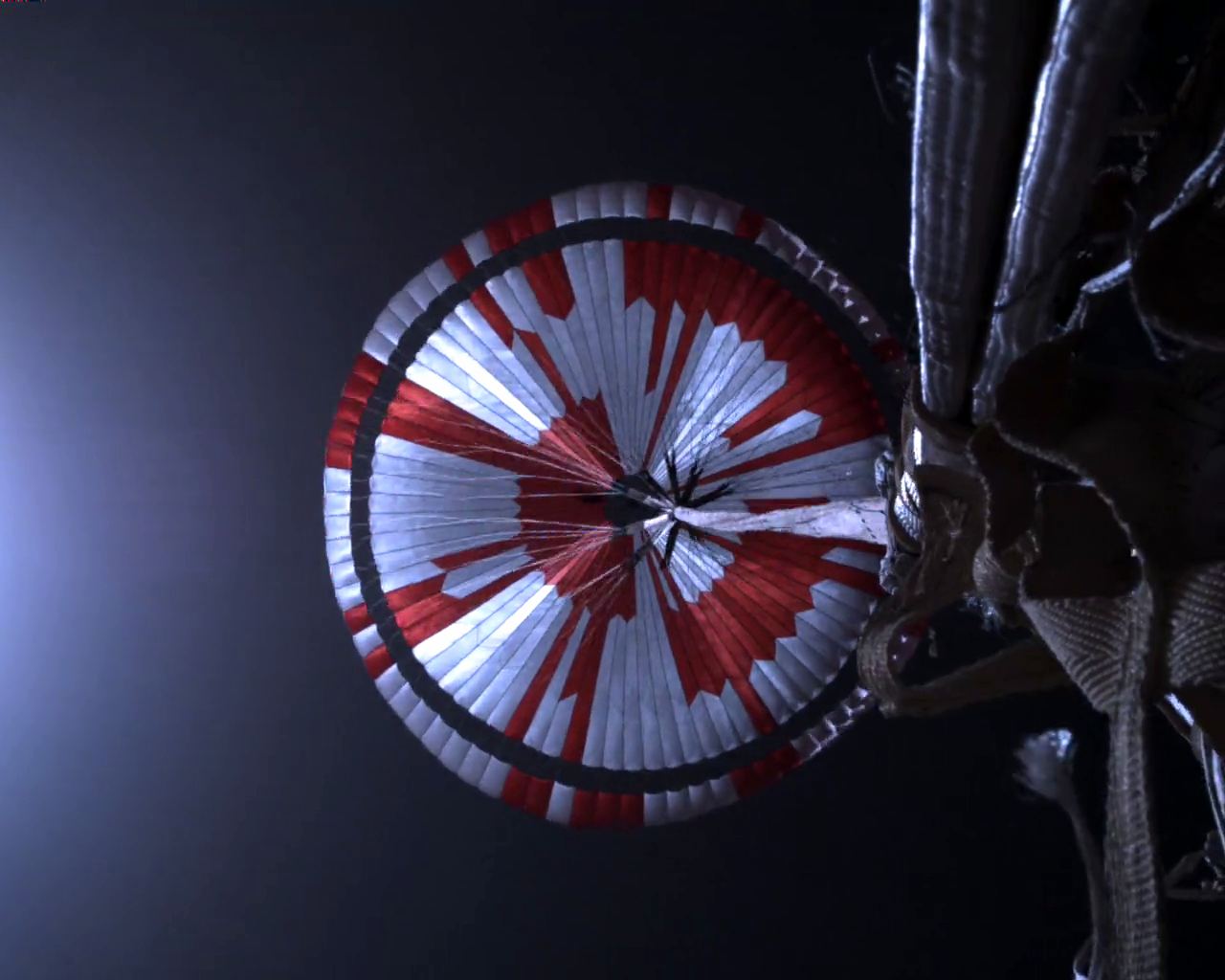
A secret coded message was hidden on the gigantic parachute used to land the Perseverance rover safely on the surface on Mars. And no, it wasn’t a clandestine message to the Martians. It was a message of inspiration for us humans.
But it also came as a challenge.
Continue reading “There was a Secret Code in the Perseverance Parachute”Perseverance’s Landing … Seen From Orbit!
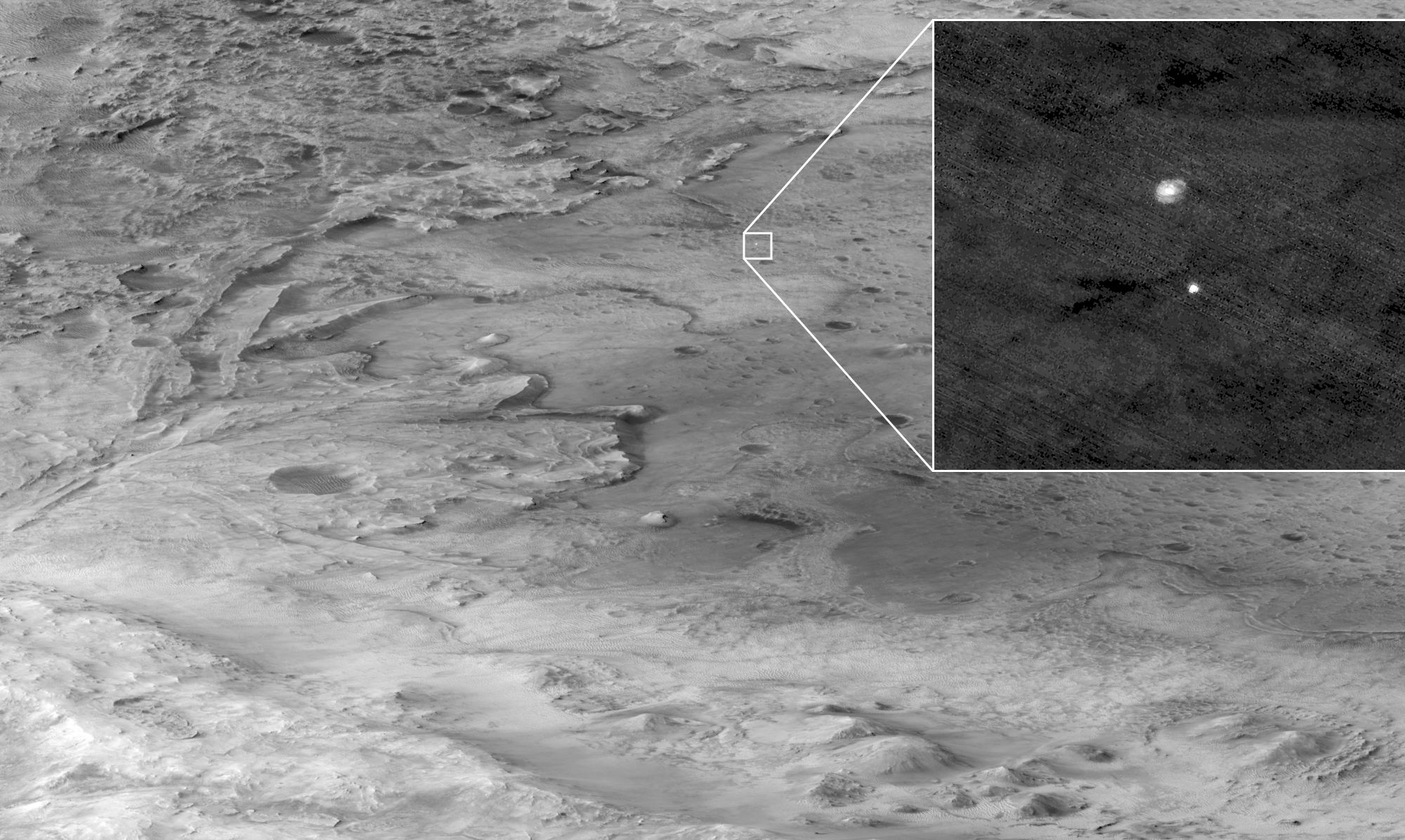
The HiRISE camera on the Mars Reconnaissance Orbiter has done it again.
The imaging team was able to capture the Perseverance rover as it descended through the Martian atmosphere, hanging under its parachute.
Stunning.
Continue reading “Perseverance’s Landing … Seen From Orbit!”Since Perseverance is Searching for Life, What Will it Be Looking for?

You have to be careful what you say to people. When NASA or someone else says that the Perseverance rover will be looking for fossil evidence of ancient life, the uninformed may guffaw loudly. Or worse, they may think that scientists are looking for actual animal skeletons or something.
Of course, that’s not the case.
So what is Perseverance looking for?
Continue reading “Since Perseverance is Searching for Life, What Will it Be Looking for?”Watch Perseverance Land on Mars. Mind…Blown
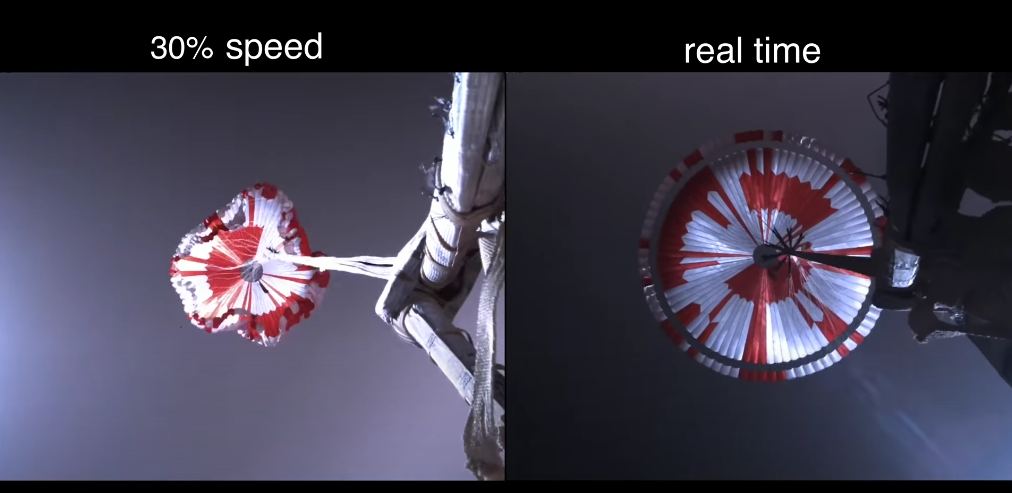
NASA’s Perseverance rover is practically bristling with cameras. And those cameras were busy during the rover’s breathtaking descent to the Martian surface. Now NASA has released images and videos of the blessed event.
Continue reading “Watch Perseverance Land on Mars. Mind…Blown”There’s Evidence That Mars Once Had an Atmosphere With Less Oxygen. A Possible Biosignature For Life?
Remote sensing is only useful if scientists have an idea of what they are looking at. That knowledge is especially important for remote sensing applications on other planets, such as Mars, where it is extraordinarily difficult to collect information about an observed object in any other way. To make up for the lack of ability to perform other tests in situ, scientists set up laboratory experiments with different environments and materials and compare the remote sensing data with the observed remote objects.
That is exactly what Jiacheng Liu, a doctoral student at the University of Hong Kong, did with remote sensing data from the surface of Mars. What he found gave new weight to a novel theory – that Mars didn’t used to have a significant amount of oxygen in its atmosphere. The fact that it does now prompts the question of where all the oxygen that exists in the atmosphere today came from. One possible answer is the same place it came from on Earth – photosynthetic life.
Continue reading “There’s Evidence That Mars Once Had an Atmosphere With Less Oxygen. A Possible Biosignature For Life?”Perseverance has Landed. Here are its First Pictures From the Surface of Mars
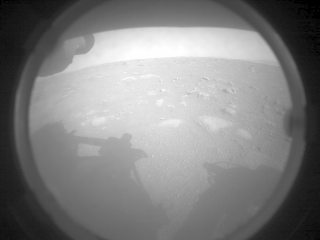
They’ve done it again. After a journey of nearly seven months for the Perseverance rover, the Navigation and Entry, Descent and Landing teams successfully guided their intrepid traveler to a pinpoint landing inside Jezero Crater on Mars on February 18, 2021.
And within minutes of the landing, Perseverance sent back two images from the front and rear Hazard Avoidance Cameras, revealing its surroundings on the Red Planet.
Continue reading “Perseverance has Landed. Here are its First Pictures From the Surface of Mars”NASA’s Perseverance Rover: The Most Ambitious Space Mission Ever?
When it comes to Mars exploration, NASA has more success than any other agency. This week, they’ll attempt to land another sophisticated rover on the Martian surface to continue the search for evidence of ancient life. The Mars Perseverance rover will land on Mars on Thursday, February 18th, and it’s bringing some very ambitious technologies with it.
Continue reading “NASA’s Perseverance Rover: The Most Ambitious Space Mission Ever?”NASA’s InSight Will Have Reduced Capability Until a Dust Devil Cleans off its Solar Panels
All eyes are on Mars this week, and, if we’re being honest, NASA’s InSight lander isn’t the star of the show right now. At the time of writing, we’re anxiously waiting to find out whether or not the Perseverance rover survives its fiery arrival at Mars. But Entry, Descent, and Landing (EDL) is just the first hazard that awaits robotic missions to the red planet. Mars exploration is a marathon, not a sprint, and while Perseverance is just getting started, InSight, which has been on the red planet for two years now, is approaching a tough leg of the race.
InSight’s nemesis: Martian dust. The same cruel villain that killed the Opportunity rover back in 2018.
Continue reading “NASA’s InSight Will Have Reduced Capability Until a Dust Devil Cleans off its Solar Panels”




